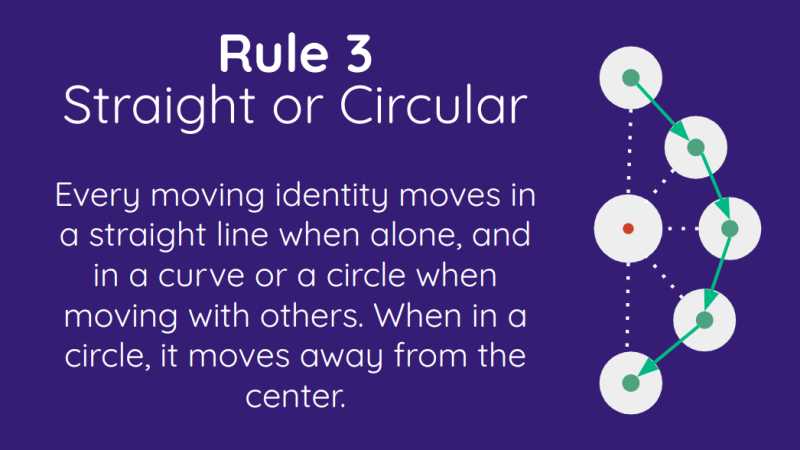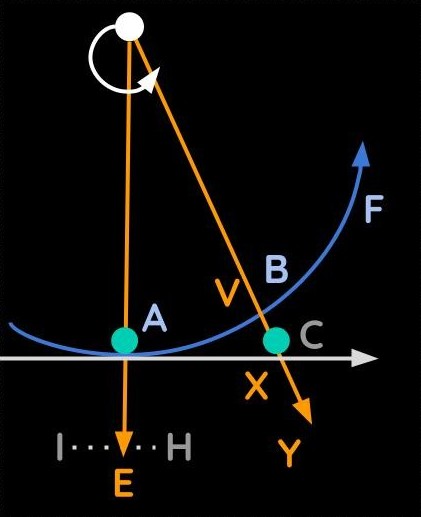Rule 3: Angular Momentum
Table of Contents
Rule 3: Straight or Circular
Rule 3: A moving body always travels along a curved line in totality, even if its individual parts seem to travel in a straight line.

Thus, a body’s total or long-term motion is different from its individual or short-term motion.
For example:
- the parts of a wheel go around because they are linked together.
- But their individual inclination is to go straight.
- As soon as one is free, its motion ceases to be circular and continues in a straight line.
- a stone whirled in a sling goes in a circle while in the sling and causes the cord to stretch
- it goes straight out as soon as it leaves the sling
It always goes in a straight line. It goes around only under constraint.
This rule, like Rule 1 and 2, is based on God conserving everything by His continuous action. This means that He is conserving it anew at every instant and not as a mere continuation of the past conservation*.
Superphysics Note
Straight-Line “Free” Motion
Of all motions, only the straight motion is entirely simple. Its whole nature is understood in an instant. We only need to think:
- that a body is moving in a certain direction and
- that that direction happens* in each instant while it is moving
Superphysics Note
Curved “Constrained” Motion: Cartesian Relativity
By contrast, a circular motion or non-straight-line motion requires us to at least think of:
- two of its parts, each in its instance, and
- the relation between them.
The sophists might say here that the linear motion occurs instantly.
A correct interpretation is that the cause of all motion is to be found in the bodies in each instant. This cause is revealed while they are moving. Not all causes produce circular motion.
For example, suppose a stone is moving in a sling along the circle marked AB.

- You perceive its movement at the instant when it arrives at point A
- It is in the act of moving towards C. Its action is directed in that direction in that instant. The difference is that the movement towards C is in a straight line.
Thus, if the stone begins to leave the sling, God will continue to preserve it as it is at that moment [when it left the sling]. He will not preserve it with the old inclination to go along the curve AB. Instead, He will preserve its inclination to go straight ahead toward point C.
According to this rule:
- God alone is the author of all the motions in the world
- But it is the diverse dispositions of matter that render the motions irregular and curved
This is why the theologians teach that:
- God is also the author of all our actions
- But the diverse dispositions of our wills render those actions evil
I could go on and add more rules for all the motions of Nature.
But these are the three that will be supported by the mathematicians and evidence.
God disposed all things in number, weight, and measure*.
Sapientia, 8, 21. The statement was a commonplace of medieval thought and was encountered by every schoolboy in the opening line of Johannes de Sacrobosco’s Algorismus vulgaris, the standard arithmetic textbook from the mid-13th-mid-16th century.
The knowledge of those laws is so natural to our souls that we take them for granted and we even assume that those laws would apply in all the universes that He created.
Thus, those who can examine the consequences of these truths and of our rules will be able to know their effects. They will be able to demonstrate a priori everything that can be produced in that aethereal world.
This means that if God did a miracle in that aethereal world, then the laws of nature in this world would change as well.
I cannot give evidence of all these assertions. But these open a path for you to find them yourselves.
Most minds lose interest when one makes things too easy for them. This is why I must employ both shadow and bright colors.